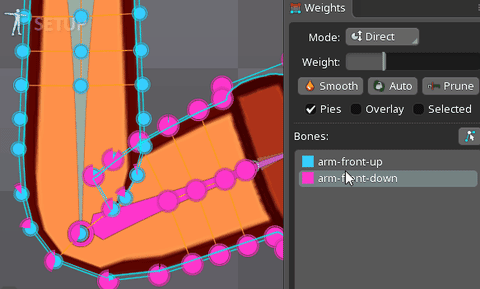
Many tough ligaments and the powerful hip muscles hold the head of the femur in place and resist some of the most powerful strains in the body. In the hip joint the rounded, almost spherical head of the femur (thigh bone) fits tightly into the acetabulum, a deep socket in the os coxa (hip bone). The added stability of the hip joint is necessary to bear the weight of the body resting on the legs while performing actions such as standing, walking, and running. The hip joint is somewhat less mobile than the shoulder, but is an overall stronger and more stable joint. A hyaline cartilage ring called the labrum surrounds the glenoid cavity to provide a flexible reinforcement to the joint, while muscles of the rotator cuff hold the humerus in place within the cavity. The glenoid cavity is a small and shallow cavity that permits the shoulder joint the greatest range of motion in the human body. If your diet alone doesn’t help you to reach the daily recommended amount of calcium, talk to a doctor or pharmacist about adding over-the-counter calcium supplements to your daily routine.In the shoulder joint, the spherical head of the humerus (upper arm bone) fits into the glenoid cavity of the scapula (shoulder blade). Collard greens, kale, and bok choy are all good options. Leafy greens also offer a lot of calcium. Eat them on their own, or add them to a low-sodium soup. Traditional baked beans and white beans also have a bunch of calcium. Put a few handfuls in a small plastic bag and keep it nearby to snack on.

They are great for strengthening your bones and getting a vigorous aerobic workout.Ī session of lifting, pushing, and pulling weights (or resistance bands) 2 to 3 times per week is good for your bones and promotes overall health.įor people who already have or at risk of developing osteoporosis, check with your health care provider to learn which exercises are best for you. These activities can be a step up in intensity from walking or jogging.
/190167_color-5bbbc28bc9e77c00585d93f9.png)
See Techniques for Effective Exercise Walking Typically, 20 to 30 minutes, 3 to 4 times a week is recommended. Your doctor or certified personal trainer can help you decide what is appropriate. The pace and frequency of your walks or jogs are up to you.

Regularly performing weight-bearing activities is a great way to build and maintain bone mass. Read Osteoporosis: The Primary Cause of Collapsed Vertebrae Participate in weight-bearing exercise

Thinning bones can collapse during normal activity, leading to a spinal fracture. Osteoporosis causes bones to thin and become brittle and weak. Osteoporosis: The Primary Cause of Collapsed Vertebrae


 0 kommentar(er)
0 kommentar(er)
